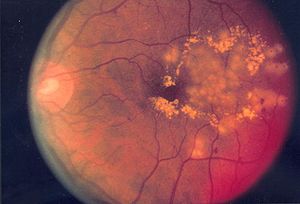There is no neat, targeted way to treat diabetic retinopathy, a condition that could lead to blindness. Laser therapy can result in diminished side and night vision and the other current method used, the cancer drug docetaxel, clear from the system so quickly that high doses are needed, increasing toxicity to healthy tissue. The research group ANPRON tells us about a team of Canadian scientists who think they have found a solution for sufferers of diabetic retinopathy. They have made a MEMS device (micron-sized electromechanical systems) that could be implanted behind the eye and release docetaxel on command by an external magnet.
University of British Columbia scientist Mu Chiao, who began studying diabetic retinopathy after a family member began suffering from it, said his device needs no battery and dosage can be adjusted to the needs of the patient. The device contains a reservoir loaded with docetaxel and sealed with a membrane made of polydimethylsiloxane. A magnetic field applied from the outside makes the membrane deform, triggering the drug’s release.
“This is an interesting approach towards developing therapeutically useful ophthalmic delivery systems,” John Tsibouklis who studies biomaterials and drug delivery at the University of Portsmouth, is quoted as saying. “It represents a significant advance towards device based drug delivery.”
The next challenges: making sure the device is biocompatible and has the right amount of controllability.
Related articles
- Innovation in BioMEMS-Apoptosis on Chips (biomedikal.in)
- MEMS based detection of airbubble & flow in Liquids for Biomedical Devices (biomedikal.in)


